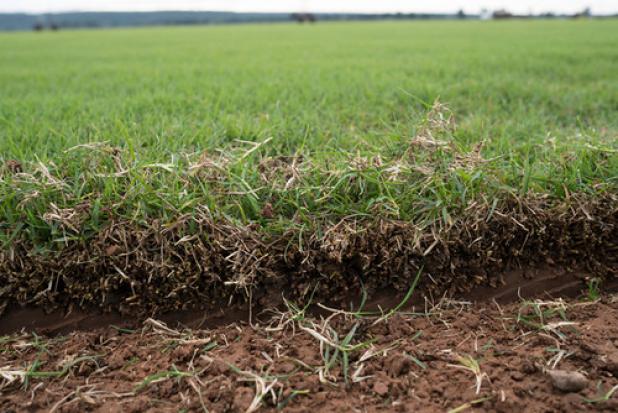
The curious case of the disappearing bermudagrass
The extension office has been busy this month with lots of questions from local producers. The two questions that we get most often are:
Where did my bermudagrass go?
Why are my pastures full of weeds and how do I get rid of them?
These two questions are actually intertwined with each other because the answer, while complicated, has to do with last year’s drought.
Normally we are blessed with an abundance of rain in Haskell County, so when the rain stops, we are often ill prepared for how to handle it. Even well managed pastures saw some stand damage this year, but the damage is even more apparent when coupled with overgrazing and low fertility.
A plant’s ability to photosynthesize, or make its own food, is limited by both grazing and drought. When a plant’s food supply is short, it will shed off portions of roots and shoots to lower its energy requirements. Prolonged drought, like the one we had in 2022, doesn’t allow the plant to regrow and it will go dormant.
While the energy requirements are low during dormancy, a plant will still chip away at its energy reserves to stay alive. As the energy reserves decrease, a plant’s ability to recover goes down and recovery time increases.
Perennial grasses such as bermudagrass will focus on building those root systems and energy reserves back up before returning to above-ground production. If plants continue to be stressed, by either drought or overgrazing, recovery time can take years. Even once the rains return, productivity will still be suppressed.
Unwanted weeds are opportunistic and will take advantage of the lack of ground cover. By the time the bermudagrass starts making a comeback, weeds are using up nutrients and soaking up sunlight needed for photosynthesis. Most stands can recover, but not without some management.
To give your bermudagrass a fighting chance, you must rebuild those energy reserves by reducing grazing pressure, increasing plant health with timely fertility, and helping to control competition by minimizing weed pressure.
Investing $10 for a soil test can tell you if your grass has adequate nutrients.Unfortunately, input costs are at an all-time high, and many people will have to make difficult decisions moving forward, but please keep in mind that the healthier bermudagrass is, the faster it can recover. A study done in Texas found that it takes 20” inches of water to grow one ton of bermudagrass in low fertility soils. Under high fertility, it only takes 4 inches of water to grow the same amount of bermudagrass. Even a plant as hardy as bermudagrass needs some extra help from time to time and this is one of those times.
By Crystal Ashalintubbi-Shipman, Haskell County OSU Extension educator
